[In the summer of 1990, I left the United States for the first time in forty years on an inexpensive two-week tour for older travelers sponsored by the University of New Hampshire. “Inexpensive” was key for me — which explains why the destination was Salamanca, Spain, the hotel had only one star, the food was unhealthy and unexciting, the program had twenty-eight participants (too many) and I agreed to share a room with a stranger. It wasn’t all a disappointment though. R., my luck-of-the-draw roommate, turned out to be terrific. And during that first trip I learned what I liked when traveling and what I didn’t.]
Among my discoveries was that one of the joys of travel can be eating. This insight did not come from the breakfasts and dinners at the Gran Via included in the program price, which sustained (perhaps over-sustained) life but could hardly be described as “joys.” However, in our second week of Salamanca togetherness, R. and I broke step with the others for lunch at a “real” restaurant in a part of the city not considered “Old.” There we found that food as we know it did indeed exist in Spain, together with spotless tablecloths, cloth napkins, crystal wine glasses, leather bound menus and a young waitress clad in sleeveless pastel linen eager to practice her charmingly shy but correct English on us — the daughter of the proprietor, home for the summer from college in the states. The bill, by our standards, was high. But worth every penny.
After we had paid it, carefully doling out equal numbers of pesos from each of our wallets, came the interesting question of who was to keep the “factura.” I want to say that like small schoolgirls playing hooky from the tour, we played one potato, two potato or eeny miney moe for it. But I seem to recall that in fact R. ceded it to me because of the two of us I was the virgin traveler. Here it is, all fancy-framed and still hanging in my kitchen:
I see we had wine, salad, perfectly cooked salmon and black coffee. The bread on the bill came, and was charged for, without our ordering it, but neither of us was then savvy enough to send it back when it appeared, not knowing we would have to pay. Oh well.
Our second hooky experience was more adventurous. We cut out for a whole day — missing, I think, an educational visit to a convent or two — not specifically for a restaurant meal, but to see the Prado in Madrid. (How could anyone come to Spain for twelve days and not see the Prado?) But it goes without saying we weren’t going back to Salamanca after the museum without first experiencing gastronomical Madrid.
It was a round trip by train, tickets acquired at the train station by means of R.’s then relatively primitive Spanish. (She’s far more fluent today.) A woman who taught first grade in a New York City public school wanted to come with us. Here we are after two or three hours of wandering from Velasquez rooms to Goya rooms to the museum bathrooms. Some people take photographs in museums despite pictograms everywhere showing cameras with big X’s on them, but I was good and didn’t. So all you get of this wonderful museum, through the kind ministrations of a passerby, is the three of us outside, beneath Velasquez himself:
Afterwards, we had a short stroll through a park nearby:
And then — a Madrid meal! Bookish ladies, we took a taxi to what the Frommer guidebook identified as Hemingway’s favorite restaurant and ordered, with reckless disregard for gastrointestinal consequences, what the elderly waiter, who spoke some English, identified as Hemingway’s favorite dinner. Was he really old enough to know? Was this kitchen lore? Piggyback hearsay? It was roast pork, with many trimmings. (We were all three ethnically Jewish, but had left observance far behind long before crossing the entryway.) It was heavy on the plate, heavy on the fork and later heavy on the stomach, especially in the Spanish heat. Also very very expensive. Maybe they got away with charging extra because of the Hemingway benediction? But it was a cozy little place, and fun while we chose and chewed, and I’d probably go again if I were still there, If only to try to find my own favorite dinner on the menu.
As I acknowledged in the first of these three posts, the Hotel Gran Via — despite its single star (not to be confused with a Michelin star) — did try. One night, they even provided musical entertainment to enhance their tasteless and boring dinner. I tend to disfavor non-spontaneous simulations of native culture, trimmed and flavored for tourists. But then I thought: the musicians were at least working, which might not have been the case for them every day. And many of our program’s twenty-eight participants seemed to enjoy the hokey performance. So who was I to carp? I took a picture instead:
Another afternoon we were taken to a sort of bullfight, with paella afterwards. I say “sort of” bullfight because this bull had had much experience, which is not supposed to happen, and had been trotted out and put through some paces for our benefit. Neither matador not bull died at the end, and no one was even injured. (There were no picadors.)
But the paella was pretty good. Not quite as good as one Bill and I ate in Barcelona twelve or thirteen years later, but maybe third most memorable meal of the trip, so I’m not complaining.
Another discovery was how much I disliked being endlessly bused from place to place to cover all the “must see” historic artifacts and “must see” cathedrals in the area, with too-long stops on dusty highways for impromptu lectures and photo ops. The lectures could have been delivered on the bus, if it had been equipped with sound equipment. And souvenir books contain better pictures, taken by professional photographers, than you can ever take yourself.
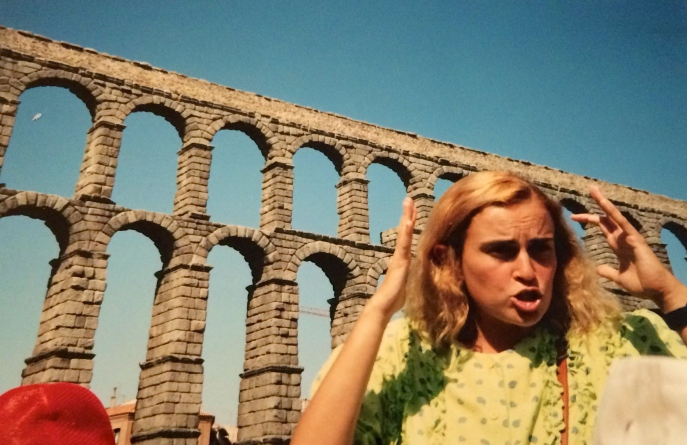
“Professor Nena” lecturing about aqueduct with great seriousness during bus stop on way to Segovia cathedral. Lecture was followed by photo op.
I also became depressed by all the unrelieved religious suffering depicted in Spanish art.
I preferred Segovia’s window boxes:
Sitting in Segovia’s Plaza Major, where we ate lunch-time sandwiches, was also a pleasant experience: we watched whoever walked by while waiting for more busing. We were going on to Alcazar, summer palace for Ferdinand and Isabella.
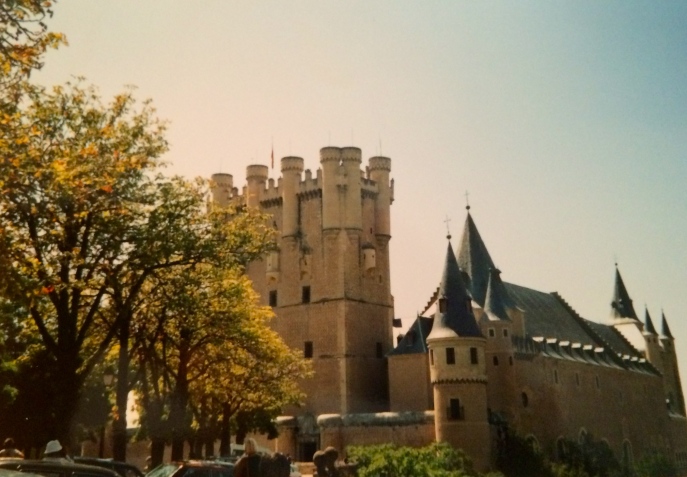
Alcazar: the royal summer palace. It’s above the plain, so presumably somewhat cooler than below. But it wasn’t really cool inside, believe me, despite the thick stone walls. And we weren’t wearing layers of fifteenth-century royal trappings!
What I really wanted to see was how life was being lived in 1990 by people still alive. Which is probably why I took this picture on our next day’s busing to the province’s largest city:
But by the time we got through the Sculpture museum in Vallodolid, and hurried past the Palacio de Justicia (which would have been interesting to me, but no dice), it began to rain. So this is all I can show you of Vallodolid cathedral. Does it look much different than other cathedrals of the period? I am not the one to ask.
Here’s a happy picture. On the next day’s bus trip, to Avila, our pit stop for toilet needs was (oh joy!) an up-to-date modern bathroom. You can see that R., like me, thought it a welcome event. At last!
Our destination that day was the monastery of St. Thomas at Avila:
When we reached the Avila cathedral, I was cathedral-ed out. But I couldn’t resist these three near the door:
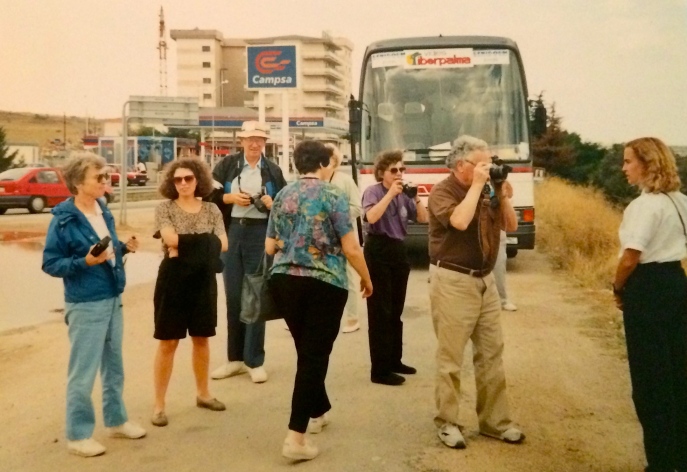
A photo op of something outside Avila. I photographed the photographers. Oh, there is R. in the purple t-shirt, tirelessly taking pictures. I wonder if she still has them, and if so, whether she ever looks at them.
Our last bus trip was to:
First stop: the Hostal de San Marcos, Leon. This is the most luxurious of all the stops for religious pilgrims. We weren’t supposed to photograph the interior, but this time I was not a well-behaved tourist:
And then it was back to Salamanca for our farewell dinner at the Gran Via. They tried to make it festive. We actually had fresh oranges for dessert. Here is Pedro — yes, I finally found his picture! — peeling an orange decoratively:
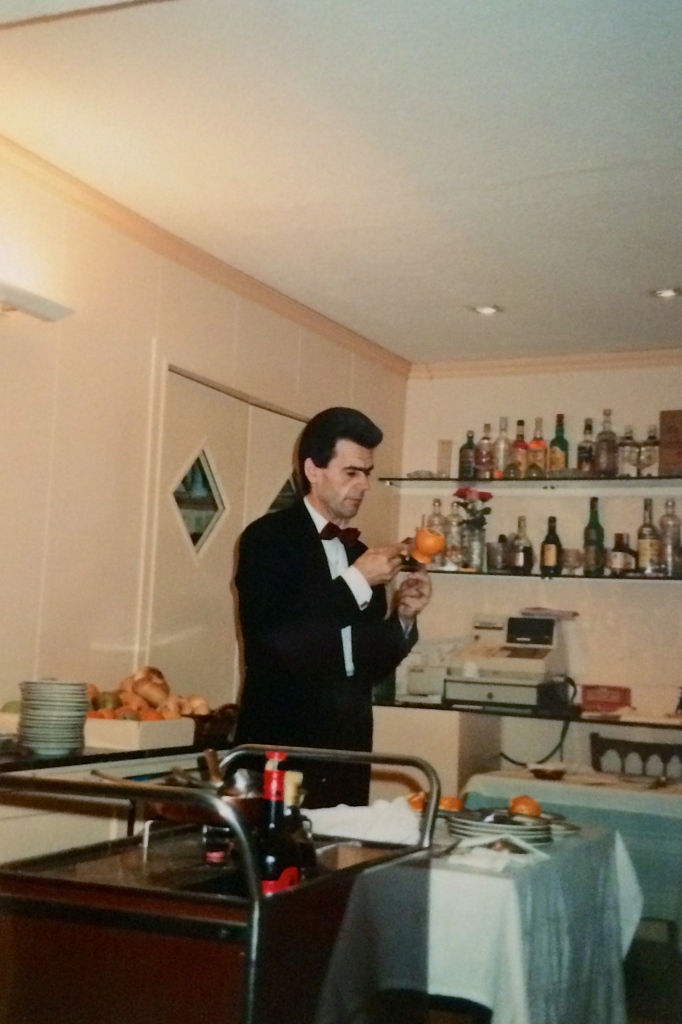
Pedro — waiter, maitre d’, général factotum. He did his best. We tipped him generously. I’m glad I found his picture after all.
**************
But of all the photographs of this first trip [and I’ve spared you more than half of them], the ones I still like best — together with the two from behind the village of La Alberca in the last post — are these, taken in front of Avila cathedral. I couldn’t decide which I preferred, so I enlarged and framed them both. They hang over the upright piano in our small dining room where I can look at them every evening while we have supper. The children so intent on their game and oblivious to the foreign lady with the little camera are now adults in their thirties. But in my awkward pictures they remain forever at play with a ball, caught in a moment before they grow up and raise their eyes to the saints above them.
Well, what’s past is past. Time to put the album away and get going with making dinner.






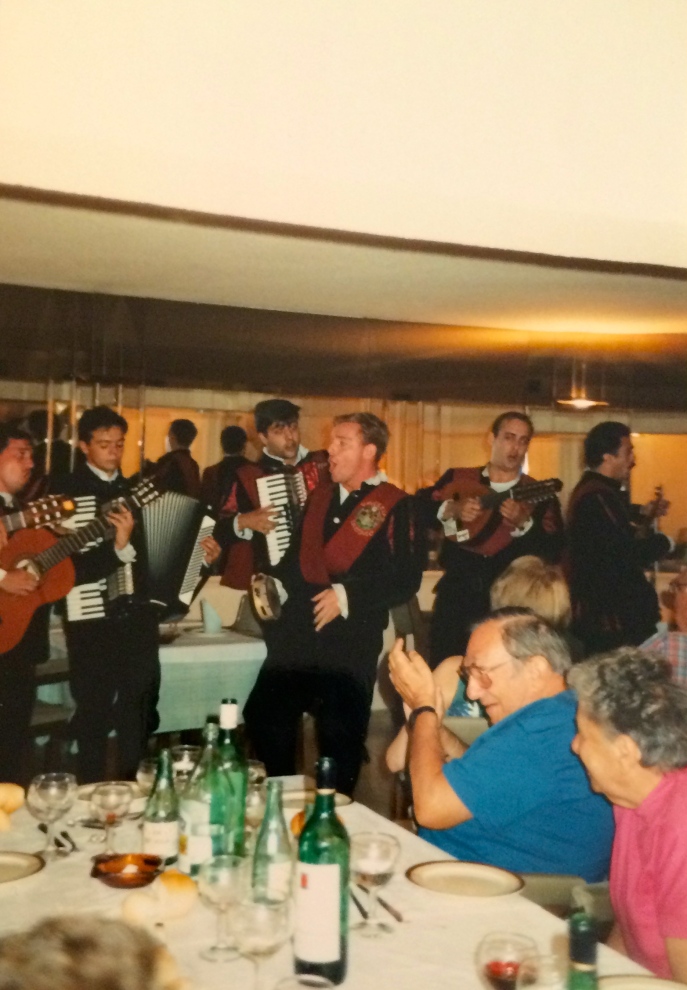


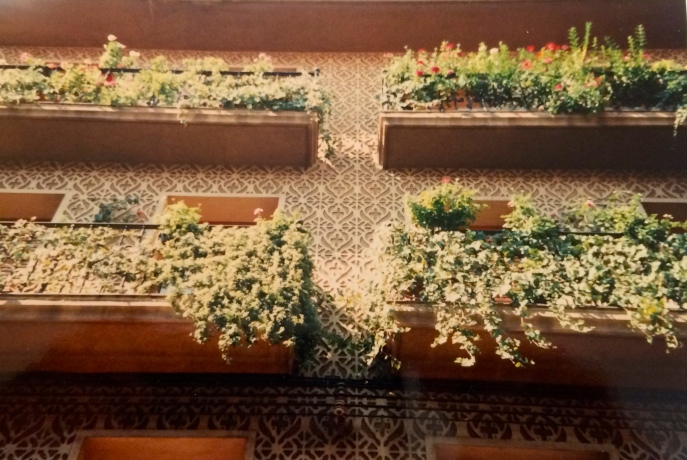


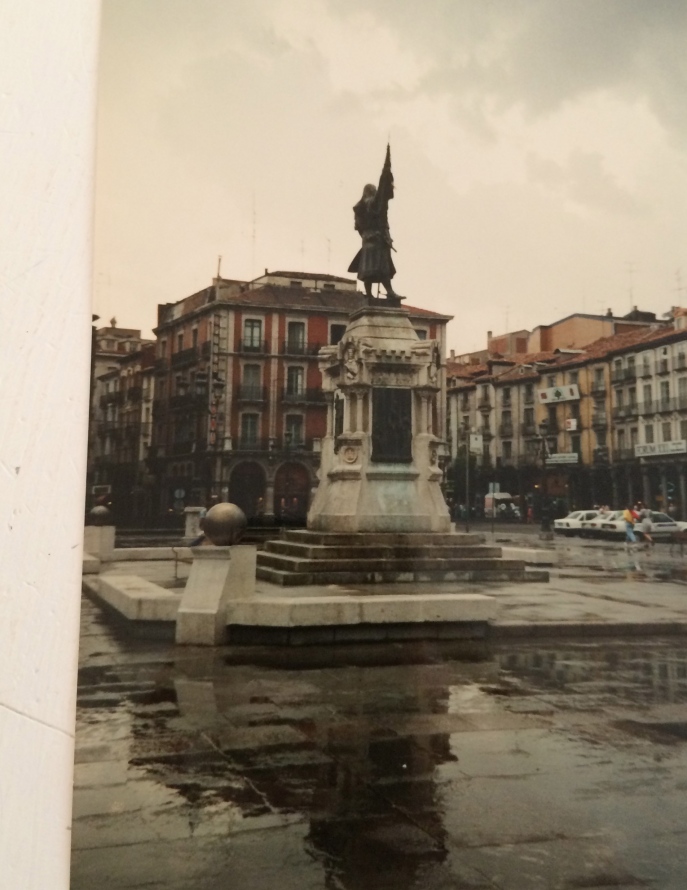

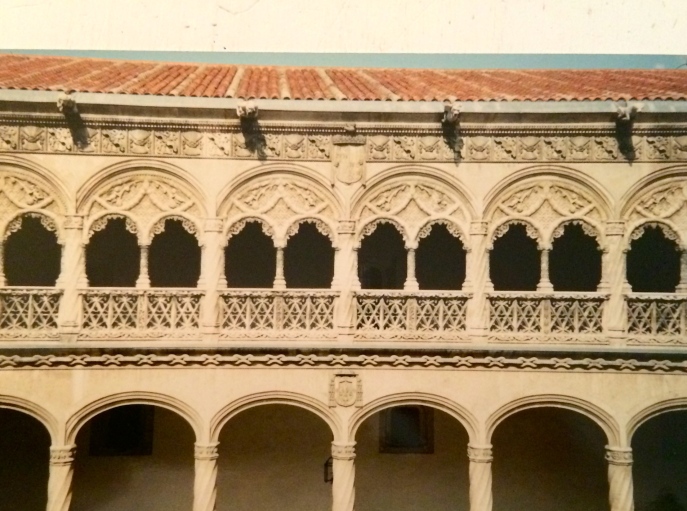
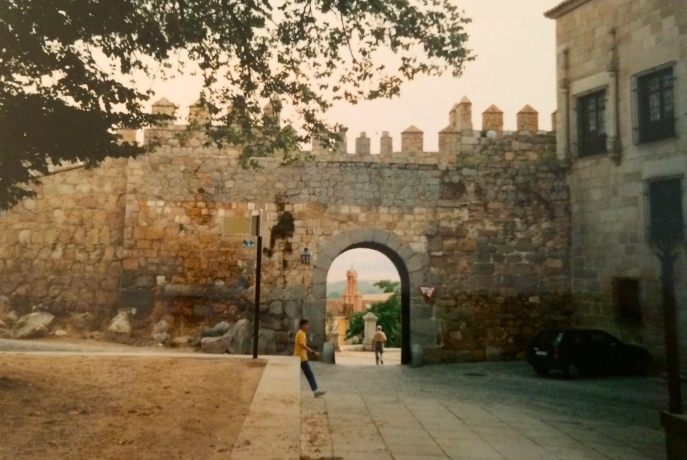


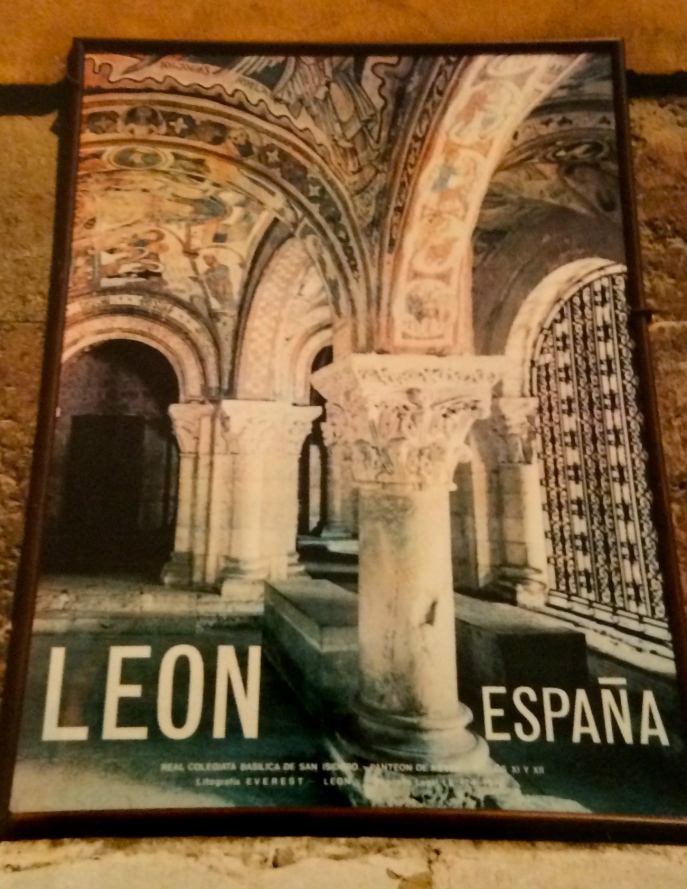

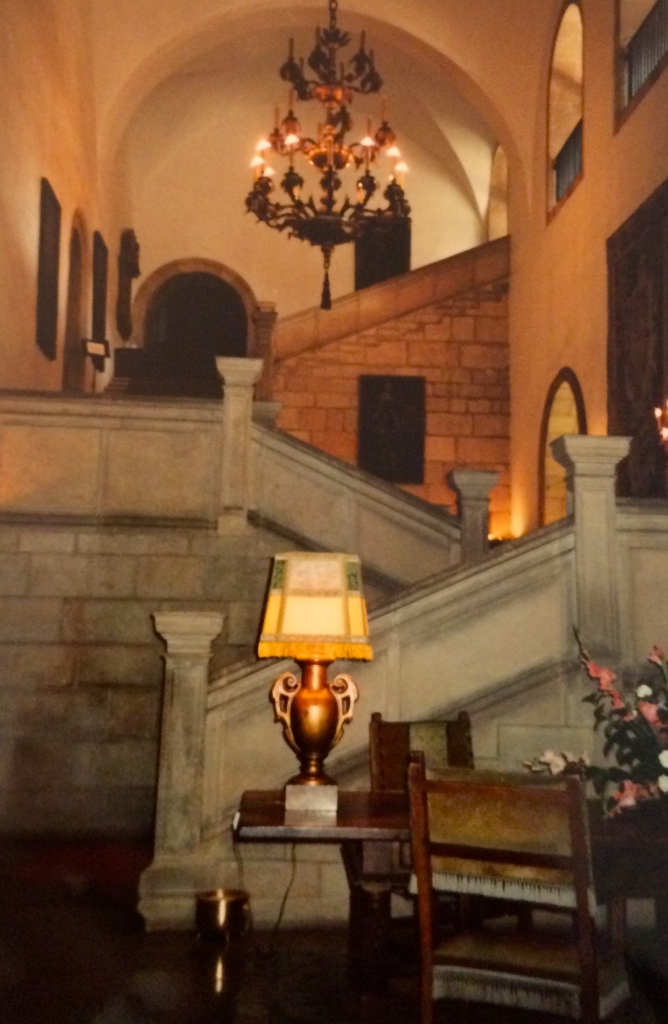
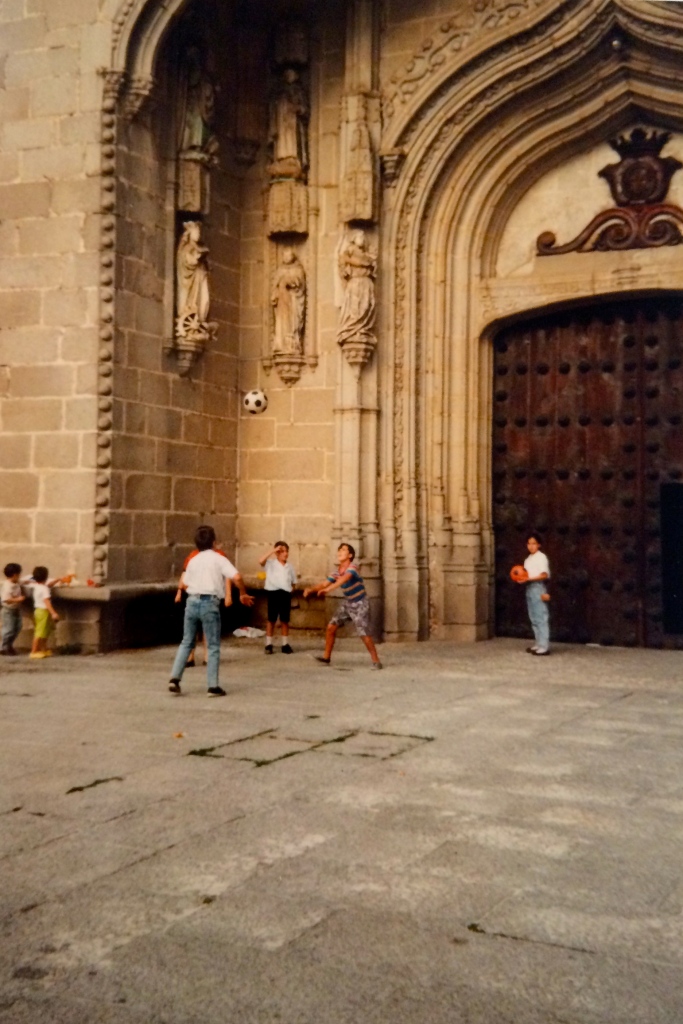

Oh, I want to go. And you even make it fun to go ‘poor’.
LikeLike
Oh, gosh. (A comment at last!) Thank you so much. Now that you bring up “poor,” I think the whole sweaty two-week trip, airfare included, plus breakfast and dinner (but excluding Madrid, lunches and tips) was between $2200 and $2500. (More for a single room.) Of course, that was twenty-four years ago. But still..,, I guess it wAs a bargain! And it certainly whetted my appetite for more travel, although perhaps not by bus. 😀
LikeLiked by 1 person
If I may say so, your photographs are wonderful, and I humbly think you might not give yourself enough credit 😉 I love the last 2 photos of the children playing.
I enjoyed reading your adventure. I have yet to visit Europe, but am interested in Russia (I’m not sure if Russia – being so huge – is considered Europe? Well, you know what I mean ;)) and Spain especially. I felt as though I was traveling with you, on a very unique experience.
LikeLike
The western part of Russia certainly is Europe (geographically, if not culturally, speaking). I’ve been there too, on a quite different kind of program, in 1992 — the year after the fall of Communism. And brought a camera. Which resulted in two — count them — two big albums of automatic camera photographs of Moscow and St. Petersburg. But they will have to stay in the bookcase, at least for now. So you will need to “do” Russia by yourself. Be warned, though: it’s become very expensive for tourists. If you go to Spain, try to include Barcelona and Madrid, whatever else you visit. And avoid the height of summer. Hot, hot, hot.
You’re always too kind about my photographs, Takami — and especially now about these, when I had not a clue about what I was doing. But I’m glad you enjoyed the three posts. 😀
LikeLike
I have to admit, that in my travels abroad, I didn’t spend much time in museums. But I did love to visit libraries, colleges, and bars of all sorts. What interested me most, was people and culture… the way people lived their ordinary lives. I also loved visiting parks and nature spaces. And found great pleasure in monasteries. No matter where we go though, it’s wonderful seeing new sights. It’s a reset for our perspective, and it stimulates our natural curiosity.
LikeLike
I wholly agree, Shimon, that the way other people live their ordinary lives is what travel should really be about. Monasteries? Can’t say I’ve had that experience, except by walking through when they’re no longer in use. And bars? No thank you. But regarding the reset of perspective and stimulation of curiosity — absolutely!
LikeLike
As usual , a very interesting , as opposed to just informative , blog. You have a way of describing your journey and fellow travellers that make me live your trip with you. The photos I like best are ‘leaving St Thomas Monastery ‘(I love the archway taking you to ? ) and the ‘Plaza Major ‘ plus the rain, the contrasts are great. These are places I have never been to and now I’m not likely to, so thank you.
LikeLike
I’m afraid the archway led, in our case, back to the bus. (Outside Salamanca, everything led back to the bus.) It’s interesting, though, which pictures different people favor. Do you suppose the English have a special predilection for rain? I took that Plaza-Mayor-in-the-rain picture feeling “Oh my God, is this what I came to see?” But I guess it came out okay after all. Very happy you enjoyed the trip, Margaret.
LikeLike